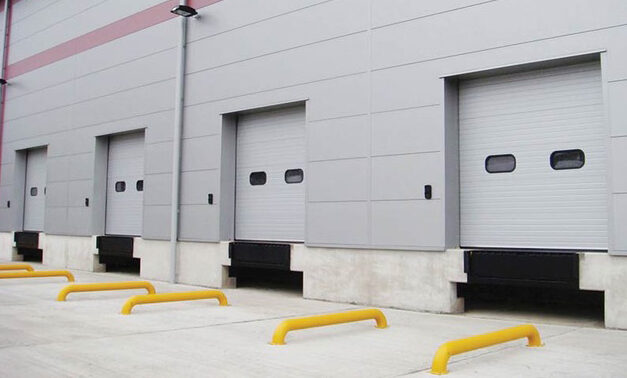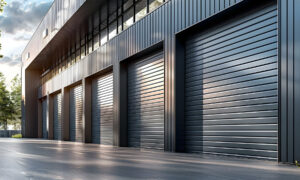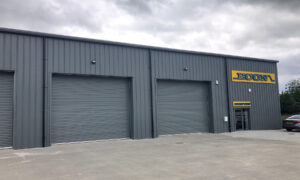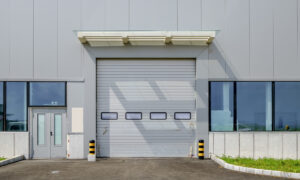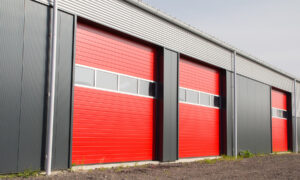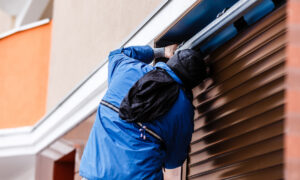Get the right loading bay equipment and it could make a tonne of difference to your business. That’s because you’ll find it quicker, easier and safer to load and unload goods.
So where should you start?
Whether you need to build a new loading bay or want to update an old one, it’s helpful to know exactly what equipment is available – and where it might prove useful.
With that in mind, we’ve created this loading bay guide. Here, we take a look at all of the equipment you need, covering the essentials and the little extras that make operations that bit smoother.
What loading bay equipment do you need?
Levellers
Loading dock levellers are platforms that provide a connection between a vehicle and a building. When there’s a height difference between the vehicle and the building, dock levellers act as a ramp.
Ultimately, they make it easy for you to move goods between the two spaces. They can be operated mechanically or hydraulically. And there are lots of varieties to choose from.
Here are a couple of common dock leveller options:
Hinge lip dock levellers
Hinge lip dock levellers can be raised and lowered. The hinge lip then swings out and comes to rest on the vehicle bed. This type of dock leveller is best suited to standard sized vehicles.
Telescopic lip dock levellers
Telescopic lip dock levellers have an extending and retracting lip plate. They offer a greater range and reach than hinge lip dock levellers, meaning you can get precise positioning even when vehicles and loading bays are mismatched in size.
Edge of dock leveller
This is a cost-effective solution that works well when you don’t have enough space for one of the other dock leveller options listed above. Edge of dock levellers are installed on the front surface of the loading bay and have a mechanically operated lip plate.
Dock shelters and seals
Dock shelters and dock seals perform the same function. They create a seal between a vehicle and the docking bay, protecting the space from outside elements in the process.
Shelters and seals are essential if you have a temperature controlled environment – or you need to protect your building from any type of external contamination, like insects or airborne pollutants.
They’re also really useful if you want to protect goods from the wind and rain. And if you want to maintain a safe and pleasant working environment for the team members responsible for loading and unloading.
But what’s the difference between a dock shelter and a dock seal?
Dock seals
Dock seals are usually constructed of foam pads attached to the edge of your loading bay. When a vehicle reverses, it compresses the pads and forms a strong seal around the top and sides of the trailer.
Dock seals tend to create a very tight, very effective seal. But they don’t work well if you need to accommodate vehicles of varying sizes.
Dock shelters
Dock shelters are slightly less effective than dock seals when it comes to keeping out the elements. But they’re much more versatile. If you have a large docking bay opening – or you load and unload using a range of differently sized vehicles – this is the option for you.
Dock shelters come in two main forms:
- Inflatable dock shelters that inflate to meet the top and sides of a trailer.
- Curtain dock shelters that consist of a reinforced fabric curtain and a sturdy frame (usually made from aluminium or fibreglass). The frame presses against the top and sides of a trailer.
Bumpers
Dock bumpers protect loading bay walls in case of bumps and knocks from vehicles. Most bumpers are made from shock-absorbing rubber and they’re available in a range of sizes and shapes.
You attach dock bumpers to the walls of your loading bay. They then cushion the blow and significantly reduce damage if there’s ever a collision.
Wheel guides
This item of loading bay equipment does what it says on the tin. These low-rise barriers act as a guide for drivers, ensuring that vehicles are properly lined up with the loading bay.
It’s easier to use dock levellers, shelters and seals when a vehicle is in a straight and central position.
Wheel guides also help to prolong the lifetime of dock shelters as they reduce the amount of off-centre pressure they experience.
Wheel restraints
Wheel restraints help to improve loading bay safety. As a driver comes to a stop at the loading bay, wheel restraints clamp the vehicle’s wheels so it can’t move.
This stops drivers pulling away when unloading or unloading is still in progress. It also protects your team in case of accidental vehicle movement.
Lighting
LED dock lights attach to the wall of your loading bay on an arm which pivots. You can then manoeuvre the light so it illuminates the inside of a docked vehicle.
Traffic lights are another docking bay accessory that come in very useful.
They can be installed on the walls inside and outside of your loading bay door. And they can be connected to other items of loading bay kit – like your leveller, dock shelter, industrial door or control unit.
External traffic lights turn red when a vehicle is docked and it’s no longer safe to drive away. Inside, lights turn green when the door is open and it’s safe to unload.
Control panels
The last piece of equipment in our loading bay guide is the control panel. You can get control panels that allow you to operate any or all of the following:
- Dock levellers
- Industrial doors
- Dock shelters
- Dock lights
From one control panel, you can manage all of your docking bay equipment, improving load and unload speeds in the process.
Find the right loading bay equipment with SDS
So there you have it. A comprehensive loading bay equipment guide to help you decide which kit you need for your business premises.
Remember that the exact equipment you need will vary depending upon:
- Whether you want automatic or manual operation
- The size of your loading bay and vehicles
- The level of seal you require from a shelter or seal
- Any aesthetic requirements
Here at SDS, we manufacture, supply and install a wide range of made-to-measure loading bay solutions. And we offer a handy maintenance service too.
Ready to build your new loading bay? Then take a look at loading bay equipment on our website. Alternatively, get in touch with the SDS team for advice or a quote.
